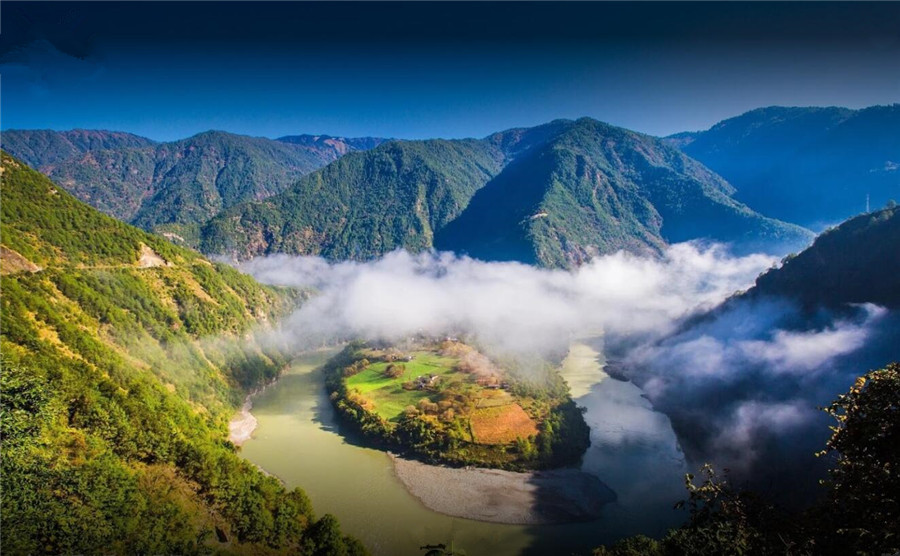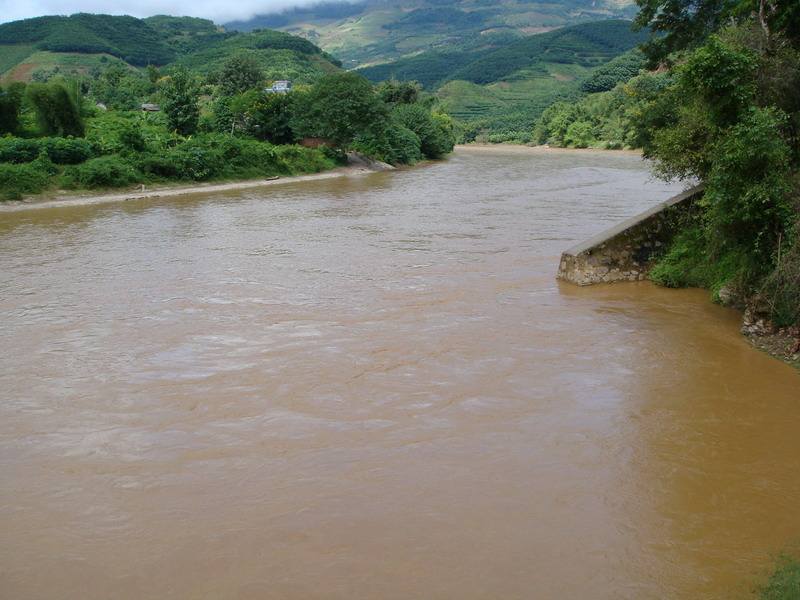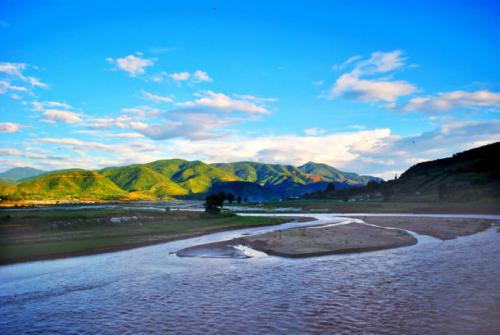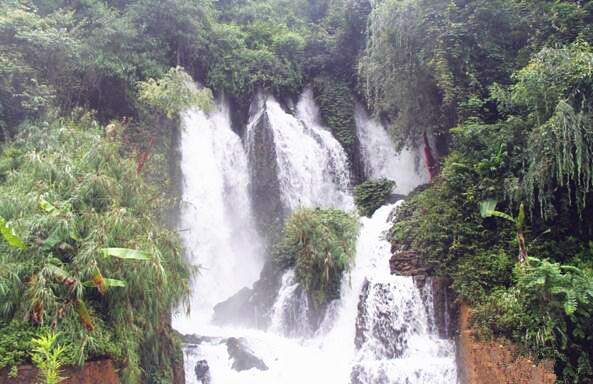
Nujiang-Salween River System
Salween River is a major river in Southeast Asia. It flows through parts of China, Thailand, and Burma for 2,815 kilometers. The river originates in the Qinghai Mountain area and and flows through China’s Three Parallel Rivers World Heritage Site, before becoming the Salween in Burma and Thailand and emptying into the Andaman Sea.
Overview
Salween River, Nujiang River or Nu River, major stream of Southeast Asia and the longest in Myanmar (Burma). Rising in the Tanggula Mountains, a range of eastern Tibet, the river flows generally south for about 3,200 kilometers through Yunnan province, China, and eastern Myanmar, emptying into the Gulf of Martaban of the Andaman Sea at Moulmein. In its lower course the river forms the frontier between Myanmar and Thailand for about 130 kilometers.
Wild and picturesque in its upper reaches, the Nujiang river flows through narrow, deep gorges between high hills and cuts through the Shan Plateau(掸邦高原) of Myanmar. It is crossed by the Burma Road(Huiting Bridge) and by several road ferries in the Shan region. While the river is navigable for small craft in certain sections, dangerous rapids have impeded its use as a major waterway. Its major economic use is in floating teak logs from the forests of southeastern Myanmar to the sea. Hydroelectric power has been developed on the Pilu River, a right-bank tributary (via the Pawn River), while the Salween Rapids are potentially exploitable for power and irrigation. The Salween’s lower course is navigable for less than 160 kilometers. At Moulmein, the Salween forms a small alluvial delta with the Gyaing and Ataran rivers.
The length from the source to the mouth is 3240 kilometers, among which the Chinese part is 2013 kilometers, Yunnan section 650 kilometers; The total drainage area is 325,000 square kilometers, and the Chinese part is 137,800 square kilometers; As well as the total runoff volume is about 70 billion cubic meters. In addition to the high snowy peak, the mountains in the upper reaches are gentle, the valleys are shallow, as well as the lakes and marshes are widespread; the middle reaches are located in Hengduan mountain area, with high mountain, deep valley and swift current. Tributaries on both sides of the river are mostly perpendicular to the river, and the trunk and tributaries form feather water system. The water quantity is mainly supplied by Rainwater, mostly concentrated in summer.
In Tibet, the Nujiang River basin is basically a pastoral area, and the animal husbandry is relatively developed; While in Yunnan, it is the mixed farming and pastoral area, and the cultivated land is mostly distributed in the valley area. In Yunnan, the climate is humid, mainly in agriculture, abundant in natural resources and rich in rice, cotton, sugar cane and fruit, is a grain production area and cash crop area.
Location
Shared by China, Myanmar (formally Burma) and Thailand, 6 million people live in the Salween watershed and depend on the river for their livelihoods, dietary protein, and nutrient rich food particularly during the dry season. The Salween flows from the Tibetan Plateau adjacent to the Mekong and the Yangtze, in the “Three Parallel Rivers” World Heritage area, at the epicenter of biodiversity in China.
Tributaries
Main Tributaries from Source to Mouth
| Rivers | Areas |
| Xiaqiu River(下秋曲) | In Tibet, China |
| Suoqu River(索曲) | In Tibet, China |
| Jiequ River(姐曲) | In Tibet, China |
| Yuqu River(玉曲) | In Tibet, China |
| Mengboluo River(勐波罗河) | In Yunnan, China |
| Nanding River(南定河) | In Kokang, Myanmar and Yunnan, China |
| Moei River(莫艾河) | In Tak Province, Thailand |
| Gyaing River(吉英河) | In Myanmar |
| Zami River(扎米河) | In Myanmar |
| Ataran River(阿特兰河) | In Burma(most of its course) and Thailand(the uppermost part) |
The Nujiang River system in China is mainly composed of its main stream and numerous tributaries. There are 59 tributaries with a drainage area of more than 100 square kilometers, of which 37 tributaries are larger than 1000 square kilometers and 6 tributaries larger than 5000 square kilometers, namely, Xiaqiu River, Suoqu River, Jiequ River, and Yuqu River(Weiqu River), Kuke River(Mengboluo River) and Nanding River. Tributaries of Salween in Burma and Thailand are short and small, is a typical feather water system.
Suoqu River(索曲), located in the left bank of the Nu River in Tibet, originates from the southern foothill of Tanggula Mountain. The Suoqu River Basin covers an area of 13,200 square kilometers and is the largest tributary in the Nujiang River Basin.
Yuqu River(玉曲), located on the left bank of the Nujiang River in Tibet, originated in the foothills of Wahe Mountain(瓦合山) in the southern part of Neiwugi, parallel to the main stream of Nu River. It is the longest tributary of Nujiang River with the largest theory reserves of water power.
The Nanding River(南定河) flows into the Nu River in Myanmar. It originated in the western foot of Liangshan Mountain, Linchang City, Yunnan Province, flowing through Lincang, Yunxian, Zhenkang, Gengma and other counties, along the way to collect the Gandi River(干底河), Xiaohei River(小黑河), Nanbang River(南棒河), etc. It flows into the Salween River in Burma after leaving 23 kilometers from China border. In China, the Nanding River is 265 kilometers long.
Protected areas
The Salween river flows through the following protected areas:
- Three Parallel Rivers of Yunnan Protected Areas(China)
- Salween National Park (Thailand)
- Salween Wildlife Sanctuary(Thailand)
Tourism
The Salween or, officially, Thanlwin River known in China as the Nujiang River, is a river about 2,815 kilometers long that flows from the Tibetan Plateau into the Andaman Sea in Southeast Asia. The section of Nujiang which located in Yunnan Province surges ahead between the Gaoligong Mountain and the Biluo Snow Mountain, which are both at an average altitude of over 3000 meters. Besides, main attractions related to Nujiang River includes the first bend of Nujiang River and Nujiang Grand Canyon. Nujiang Grand Canyon is the world’s third Grand Canyon to the Brahmaputra waters canyon in China and of the Colorado Grand Canyon in the southwestern United States. In the three grand canyons of the Nujiang Great Canyon, the Lancang river canyon and Dulong river canyon in Nujiang Prefecture, Nujiang Grand Canyon is the most spectacular.
Tours Related to Nujiang River in China. 9 Days Nujiang Grand Canyon Tour with Dulongjiang River Valley Hiking Adventure 6 Days Nujiang Grand Canyon Adventure with Bingzhongluo Hiking Tour 15 Days Three Parallel Rivers Overland Adventure with Dulongjiang River Valley and Tiger Leaping Gorge Hiking 10 Days Three Parallel Rivers Circle Tour with Nanjiluo and Biluo Snow Mountain Hiking 5 Days Amazing Nujiang Valley and Biluo Moutain Trekking 20 Days Yunnan Three Parallel Rivers Adventure Trekking Tour 7 Days Nujiang Gaoli Gongshan Mountain Peak Hiking Tour from Bingzhongluo

 7 Days GolfingTour
7 Days GolfingTour
 8 Days Group Tour
8 Days Group Tour
 8 Days Yunnan Tour
8 Days Yunnan Tour
 7 Days Shangri La Hiking
7 Days Shangri La Hiking
 11 Days Yunnan Tour
11 Days Yunnan Tour
 6 Days Yuanyang Terraces
6 Days Yuanyang Terraces
 11 Days Yunnan Tour
11 Days Yunnan Tour
 8 Days South Yunnan
8 Days South Yunnan
 7 Days Tea Tour
7 Days Tea Tour
 8 Days Muslim Tour
8 Days Muslim Tour
 12 Days Self-Driving
12 Days Self-Driving
 4 Days Haba Climbing
4 Days Haba Climbing
 Tiger Leaping Gorge
Tiger Leaping Gorge
 Stone Forest
Stone Forest
 Yunnan-Tibet
Yunnan-Tibet
 Hani Rice Terraces
Hani Rice Terraces
 Kunming
Kunming
 Lijiang
Lijiang
 Shangri-la
Shangri-la
 Dali
Dali
 XishuangBanna
XishuangBanna
 Honghe
Honghe
 Kunming
Kunming
 Lijiang
Lijiang
 Shangri-la
Shangri-la
 Yuanyang Rice Terraces
Yuanyang Rice Terraces
 Nujiang
Nujiang
 XishuangBanna
XishuangBanna
 Spring City Golf
Spring City Golf
 Snow Mountain Golf
Snow Mountain Golf
 Stone Mountain Golf
Stone Mountain Golf












